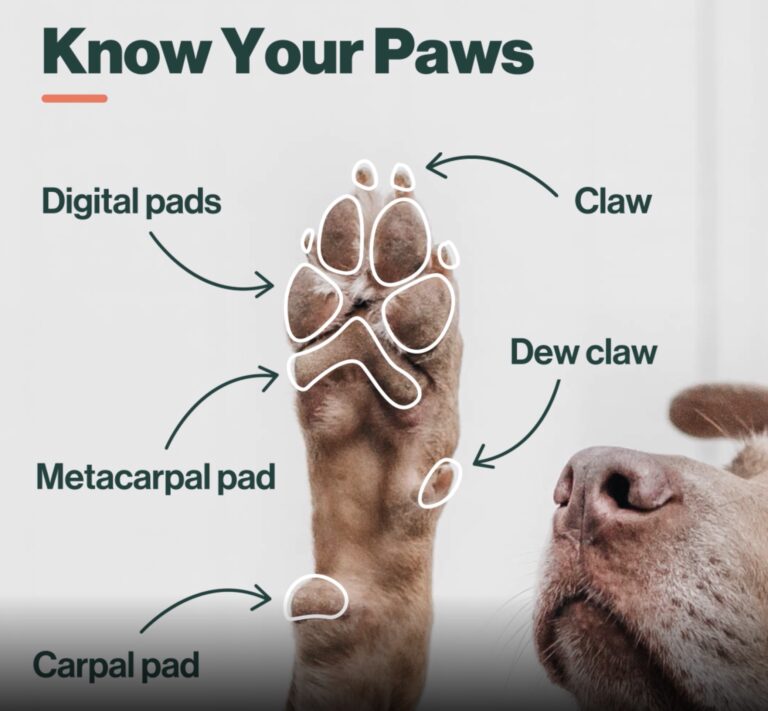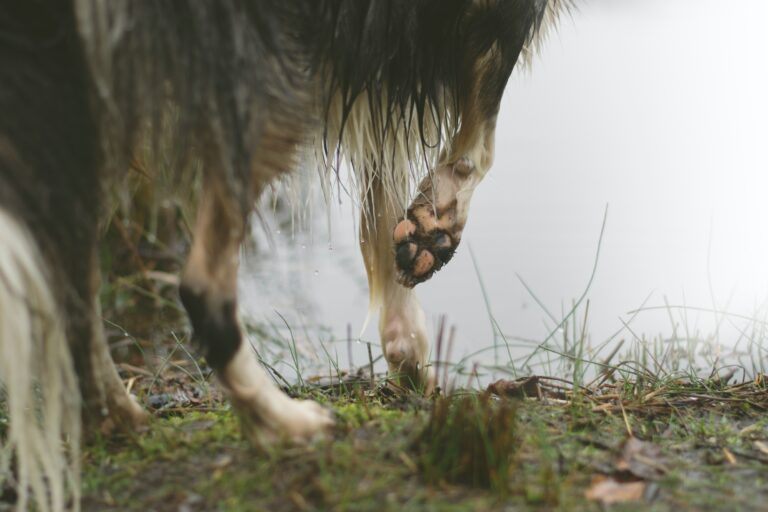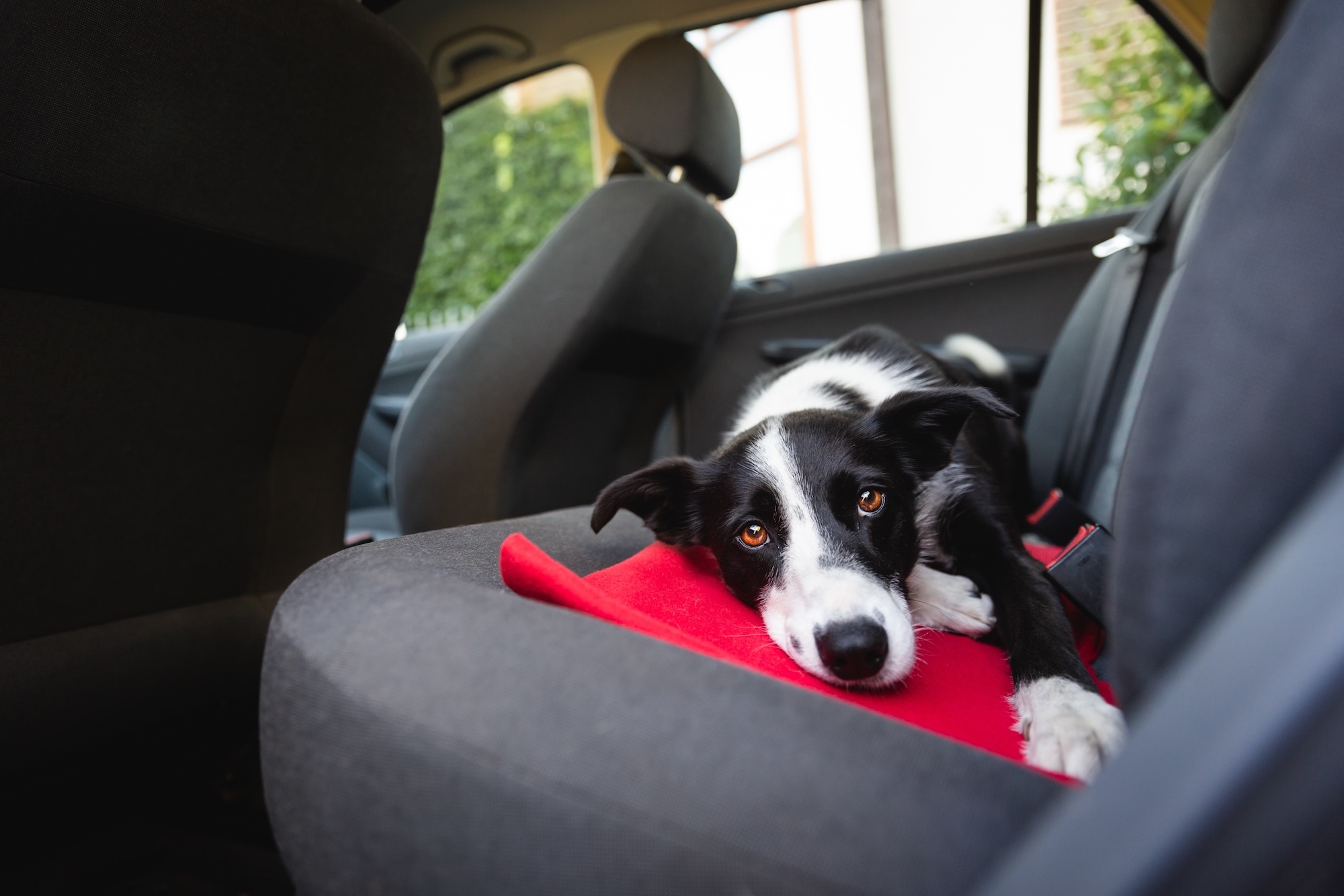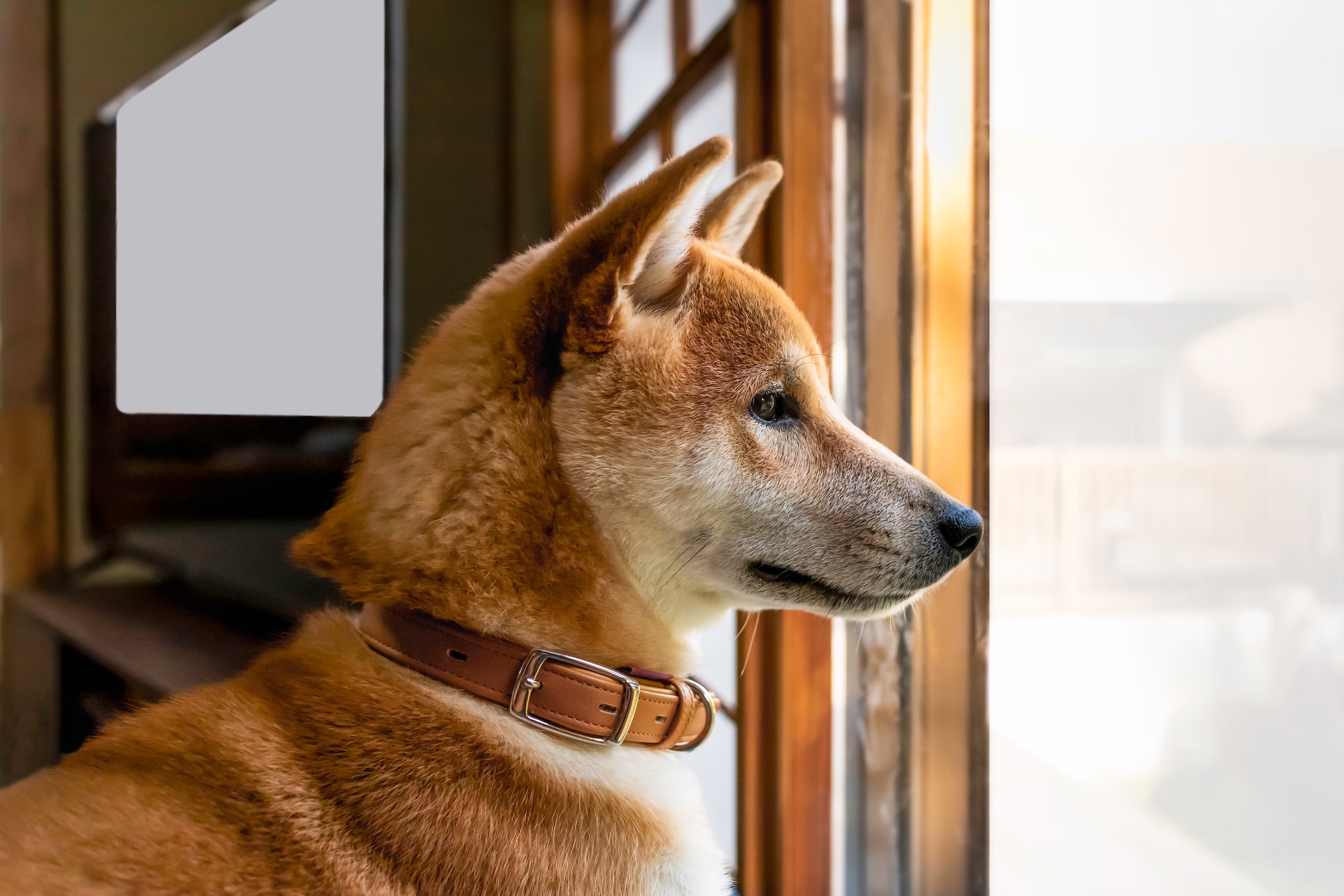Like our own feet, our pooches’ paws are as critical to the quality of day to day life as they are easy to overlook. Unlike our feet, canine paws are inarguably, and universally adorable (human feet… well, they’re a bit more hit and miss, aren’t they?) The other difference: most dogs traverse the world, whether rocky road or grassy knoll, fresh snow or hot concrete, barefoot. All of which makes you appreciate the wonder of paws even more.
Paws serve many critical functions that we humans might take for granted. Yes, they are made for walking, as well as running, playing fetch, stretching, and high-fiving. But the intricate workings of a dog’s paws also help with temperature control, offer protection from various terrain, and provide enhanced stability for licking a bone or a toy.
Paws also serve as an important indicator of your dog’s health. If paws are smelly, nails are long, or the hair is overgrown between your dog’s paw pads, these could all be signs of foot ailments that may require veterinary attention.
Keep reading, dog-lovers, for everything you need to know about your dog’s paws—how they work, what they are made of, and how you (in conjunction with your veterinarian and your groomer) can best take care of them.
What are dog paws made of?
Paws are made of muscles, keratin, collagen, adipose tissue, ligaments, tendons, and bone.
“Paws are like our hands and feet; they’re made up of many tiny bones, tendons, muscles, and ligaments, layers of fat for warmth and cushioning, and skin,” says Dr. Stephanie Austin, BVMS, and medical director of Bond Vet in New York. “They are very complex structures that work in concert with each other to allow our pets to move around fluidly.”
Paws consist of five main structures: digital pads, claws, dewclaws, carpal pads, and metacarpal pads. Here’s a quick breakdown of each of the five basic parts:
Digital pads: These are the four small pads located on each toe, used to support some of your dog’s weight as well as their joints (they’re sometimes known as toe beans…).
Claws: Claws are used for digging, provide traction, and (should a dog be in the position to do such a thing) help hold and tear at prey. They’re made of keratin, just like our nails. But while you might use “claws” or “nails” interchangeably to describe this part, there is in fact a difference between the two. While we have nails, which grow from cuticles, and are essentially “dead” keratin, a dog has claws, which grow right from the bone in the foot. They contain nerves and blood vessels, which is why trimming them can be tricky.
Dewclaws: Dewclaws are the short, “extra” claw on the lower part of a dog’s leg. Most dogs just have them on their front legs; a few, like Great Pyrenees and Briards, also have them on their rear legs. For most dogs, dewclaws serve no apparent purpose; they’re thought to be a sort of vestigial “thumb.” But some dogs use them for gripping things they’re holding in their paws. This is why you may have noticed your dog gripping a bone or dog toy with what looks like the side of their foot or leg.
Carpal Pad: The carpal pad is a small pad located above the dewclaw. It’s found on the forelimb (or front leg) and is only found in animals that walk on their digits.
Metacarpal/metatarsal pad: This heart-shaped pad supports more of the dog’s weight since it is located in the center of their foot. On the front of the dog’s paw, it’s known as the metacarpal or palmar pad, and on the rear paw, it’s called the metatarsal or plantar pad.

All paw pads are made up of adipose (fat) tissue and elastic fibers. The pads are covered by heavily pigmented, and thick skin—the thickest kind of canine skin. Dogs who spend a lot of time on hard surfaces can have tougher, more thickly calloused paws, while other more pampered paws may be smoother. This amazing part of the body protects your dog as they stand, walk, run, and jump—the cushions absorbing shock and pressure and protecting bones and joints, and the thick skin protecting against rough terrain and trauma. “When your dog runs, they need to have something cushiony between their feet and the ground to help decrease the amount of pressure on the bottoms of their feet,” says Dr. Sara Ochoa, DVM, and veterinary consultant for Dog Lab.
Most of this shock-absorbing responsibility lands on the digital, metacarpal, and metatarsal pads of the paw. The paw pads absorb shock, easing the strain that might otherwise be put on a dog’s bones or joints. The metacarpal pad offers protection from rough terrain, allows dogs to distinguish between different types of terrain, and also protects the feet from extremely hot or cold weather. The carpal pad is like the human heel and can act as a kind of brake. Shaped like a cone, the carpal pad doesn’t touch the ground when the dog walks, but if your dog is really running fast, or changing direction (think: agility, or zoomies) the carpal pads may touch the ground, helping with stopping and turning.
Preventing cold feet
Paws’ impressive feats don’t end there. These amazing appendages also help regulate a dog’s temperature in extremely hot or extremely cold conditions.
It’s easy to see how dogs’ bodies can stay warm in cold temperatures, with all that fur. But have you ever wondered how dogs are able to walk around seemingly comfortably in the snow and in cold temperatures when our bare feet wouldn’t last seconds? Paws do have all that adipose tissue which inhibits freezing. But Japanese researchers recently discovered dogs also have a special kind of circulatory system that keeps paws from freezing, and helps keep the whole dog warm, too. They found that dogs have arteries in close proximity to the veins in the footpad, allowing heat to be conducted from one blood vessel to another. This heat exchange system uses the warm, oxygenated blood from the body to heat the blood that has been in contact with a cold surface before returning it to the dog’s body, keeping paws, and organs, at a stable temperature. This system, which is also found in penguins and dolphins, hints at the cold-weather ancestry of dogs.
While this system is amazing, not all dogs can comfortably or safely stand freezing conditions, and all dogs’ paws should be protected from too much exposure to snow, ice, slush, and freezing temperatures.
While the outer, fatty layer of the paw keeps the paw from freezing in cold conditions, the inner layer of the paw contains sweat glands. These glands accomplish the opposite in warmer weather; they push perspiration to the outer layer of skin, cooling a dog on a hot day. This movement of perspiration also prevents the paw pads from drying out.
Because paws have a role in circulation, some experts recommend massaging your dog’s paws to keep their blood flowing accordingly. However, regular walks also promote promote excellent and adequate circulation, says Dr. Austin.
Dog paws come in different shapes!
Dog paws come in three main shapes: webbed feet, hare feet, and cat feet.
While most dogs have some degree of webbing between their toes, proper webbed feet are found on dogs known for hunting, retrieving, and swimming. It’s easy to guess that dogs like the Newfoundland and Portuguese water dog have webbed feet—the extra skin between their toes makes them better suited for swimming. But other dogs, like the Dachshund, bred for digging after rodents, sport webbed feet too.
Hare feet refers to a paw with two longer central toes, like the feet of their namesake. You can see this paw shape in dogs that are known for explosive speed over short distances, like greyhounds, and in other breeds like Samoyeds.
Then, there is the counterintuitively named cat foot. The smallest and most compact of the three main paw shapes, the cat foot is also more rounded than the others. When we think of cats, we might think of great balance and agility—after all, they can climb up almost anything and always land on their feet. Fittingly, this shape is made to enhance endurance and stability, and you see it on working breed dogs like the Akita and Doberman pinscher.
Why do dogs’ paws smell like corn chips?
OK, now for the big question: why do dog’s feet smell like a certain kind of crisp snack treat? While we may think it’s super cute and catch ourselves sniffing our pup’s paws to get a whiff of that chip scent (guilty!), this smell is actually caused by microorganisms that your pup picks up in their daily travels. “This delicious yet nasty smell is a byproduct of yeast and bacteria, specifically the Pseudomonas and proteus species, which make their way from soil or water into the crevices of the paw. It’s the former that gives your pet that tasty snack-food smell,” says Dr. Austin. Dogs also often lick their feet, keeping them wet, which is the best environment for fungal growth, notes Dr. Ochoa.
We know—how could something that smells so good be so bad? The chip effect does not necessarily mean your dogs’ paws are dirty, or that there’s an issue to be concerned about. This bacteria is very common and can happen to clean paws, too, as long as a dog is licking and keeping their paws wet.
While the smell is normal, overgrowths can happen. If your pooch is licking their feet excessively, if their paws are greasy or there is inflammation in the webbed part between his toes, you should consult your vet. “It’s normal behavior for dogs to lick their paws,” Dr. Austin says. “It’s how they self-clean and remember where they’ve been throughout the day. Excessive is the key word.”
To prevent this issue or to control it, you can keep the fur between your dog’s nails trimmed and wash their paws regularly.
Keep an eye out for injuries and ailments
A dog’s paws seem tough, but they’re still a sensitive part. Anything from a cut or hot pavement to an overgrowth of keratin—also known as canine hyperkeratosis—can threaten the overall health of such a delicate area. Here’s what to look out for:
- Excessive licking or chewing the paws: Why do dogs lick their paws? While some licking is normal, as Dr. Austin noted above, excessive licking or chewing is the red flag to look for. This can be a sign of environmental or food allergies. Non-stop licking can also be an obsessive behavior and warrants a conversation with your vet or a behaviorist to unravel the possible causes.
- Swelling of the toes or feet: Swelling could have any number of causes. The mites that cause Demodicosis (or Demodex) are known to cause swelling, hair loss and scaling. Swelling can also be a sign of bacterial infection, or a foreign object that’s punctured the paw.
- Broken, cracked, or ingrown nails: Nail trauma is one of the most common nail issues and can range from a break, to the nail being ripped out. A broken nail doesn’t seem like a big deal to us, but it can be a different story for dogs. As noted, dogs’ nails are actually claws which are a more integral part of the foot, so nail injuries can be very painful, and if untreated, can lead to infection and other issues. The dewclaw is commonly involved in nail breaks as it can catch on things, especially if the nail is too long. If your dog has a serious break, it’s best to consult your veterinarian to get the correct treatment and prevent infection. Nails that grow too long into the footpads also require a veterinarian visit for pain medication and antibiotics.
- Crusty, cracked paws, or broken skin on the paw pads: Canine hyperkeratosis occurs when a dog’s body produces too much keratin. A keratin overproduction can cause dry and crusty paws and sometimes even a hard, dry nose, which can lead to cracking and ultimately, an infection. To alleviate hyperkeratosis, your dog might need to be prescribed a topical ointment or antibiotics. The elements can also contribute to dry, cracked dog paws. If you do a paw check and notice that your dog’s paws are cracked, you can try applying a veterinarian-approved paw balm to their feet. You can also try to mitigate and prevent cracked paws from happening by washing your dog’s paws in warm water and toweling dry immediately after a walk.
- Blisters and burns: Your dog can burn their poor paws on steaming hot asphalt. If you’re walking on a hot day, check the pavement with your own hand. If it’s too hot for you, it’s too hot for your dog to walk on it for any length of time.
The best thing you can do to take care of your dog’s paws is to check them frequently. While carefully looking over each paw pad, check for blisters, cuts, cracks, parasites and other foreign objects that can cause abrasions.
And remember that, like your feet, dog’s paws can be tougher, or softer, and adapt depending on the amount of walking they do on rough surfaces. If you take your dog hiking often, or they’re used to walking and running on city streets every day, they’ll have tougher, more calloused paw pads. Dogs who mostly walk on grass or aren’t super active will have more delicate paws.
If you’re about to introduce a new activity like hiking, be sure to ease into it, starting with short periods of time on new surfaces to let the paw pad acquire toughness over time.
To boot (or not to boot?)
Does your dog need to wear booties? It depends on the dog, where you’re walking, and what else you’re doing to protect their precious paws.
Dog paws are designed to withstand a lot of different terrain, and they should get every chance they can to walk around au naturel. But boots can make sense in a number of different scenarios.
If you’re regularly walking through slush or ice, and on roads where salt or other de-icing substances are used, boots can be a good idea. These substances are uncomfortable to walk on, can cause burns on paw pads, and there’s a risk your dog is ingesting them as they lick their paws after walks. If you’re not booting up, plan to wash your dog’s paws in warm water after walks. You can also use a plant-based paw wax on the bottom of your dog’s paws to protect from chemicals and help prevent paws getting cracked from snowy and icy conditions.
You might also consider a bootie if you’re hiking for long distances over rough, rocky terrain. Again, you should always ease into hiking with your dog if it’s a new activity to give their feet a chance to adapt. But you can monitor your dog over time to see if they might need some extra protection if you’re hiking over very rough terrain.
Booties can also be used to help keep wraps in place when your pup has a minor paw injury like a blister or cut.
The importance of grooming your dog’s paws
Grooming isn’t just for glamor; it’s a key component in taking care of your dog’s paws.
Your dog will likely need their nails trimmed on a regular basis, especially if they spend a lot of time inside or on soft surfaces. While every dog is different, you should plan on nail trims roughly every six to eight weeks. “City dogs,” or dogs that spend a lot of time running around on concrete, or other hard surfaces may need less frequent trims as the surfaces act to wear down nails naturally.
If allowed to grow too long, nails can put pressure on the nail bed. The pressure can be painful, and can even affect the alignment of the joints and contribute to arthritis. Overgrown nails can also become ingrown, and are at greater risk of trauma (they’re also pretty tough on hardwood floors..).
The season, and a dog’s age, can also factor in to how often you trim, says Eileen Giangregorio, licensed groomer, owner and operator at Emerald City Dog Spa in Rocky Point, New York. Nails may need more frequent trimming in the winter, Giangregorio says. And as dogs get older and get less exercise, they may also need more attention to their nails, especially if they’re prone to back or leg issues.
The tricky business of trimming nails
This is where the difference between human nails and dog claws becomes painfully evident.
While we can snip any part of our nails until we reach the flesh of our fingers, dogs have a nerve and vein that runs through their claws called the quick. If you snip into the quick, it’s painful, and can cause your dog to never want anyone to go near their nails again.
As a result, the prospect of nail trimming can be stressful for dog owners, and dogs.
If you’ve never tried cutting your dog’s nails before, you may wish to have your veterinarian give you a lesson on how to do it. You may also decide to have your veterinarian or groomer handle nail trimming generally.
To trim yourself
First, use counter-conditioning to associate nail clippers and the whole nail-trimming process with good things. Introduce your puppy or adult dog to the process of trimming slowly, and build a calm, positive association with it. Touch your dog’s nails, and get your dog used to the trimming tool, and its sound, in steps, rewarding with treats as you go, before you start cutting. Then progress to trimming just one small bit off one nail.
When you’re ready to trim their nails:
Use scissor-style clippers designed for dog nails. Make sure they’re sharp. You can also use a dremel-style grinder tool specifically designed for dogs.
Hold your dog’s paw firmly. If you’re using clippers, Giangregorio recommends cutting the nail on an angle. Trim at 45 degrees away from the paw, not straight across.
Cut small amounts at a time to avoid the quick. Try and observe the color of the nail in cross-section as you’re trimming. If you see a black spot appear in the center it’s time to stop trimming.
If you hit the quick, remain calm and try not to emphasize the episode with your own reaction. For any bleeding that occurs after cutting their nails, Giangregorio recommends styptic powder to stanch bleeding. You can also use corn starch.
The longer a dog’s nails are allowed to grow between trimming sessions, the longer the quick will become. The benefit of regular nail trimming is that the quick will eventually start to recede from the end of the nail, making future sessions easier. .
If you don’t feel confident cutting your dog’s nails at home or simply prefer to have a professional do it, you can take your dog to a groomer. In addition to cutting your dog’s nails, the groomer can also trim the hair around and between your dog’s paw pads which can help prevent a potential infection.
However you tackle grooming, remember to spend time regularly looking at and handling your dog’s paws to make sure there are no signs of pain or infection (and, sure, take a sniff while you’re at it).
And next time you’re out for a walk, find some soft, cool ground and pause to consider the wonder of your pup’s paws.
Pet health is an important topic. That’s why The Farmer’s Dog editorial team carefully vets and reviews every piece of content we publish. We deliver evidence-based advice and medically reviewed facts that focus on pet nutrition, health, and well-being. The mission of this site is to help people provide the best care possible for their dogs by publishing only trustworthy, accurate, and timely health information from a group of passionate experts.
This article was vetted by a vet.
Reviewed by Alex Schechter, DVM, and founding veterinarian at Burrwood Veterinary. He was previously founding veterinarian at Pure Paws Veterinary Care.
Photo, top, by Sara Kurfeß on Unsplash.





